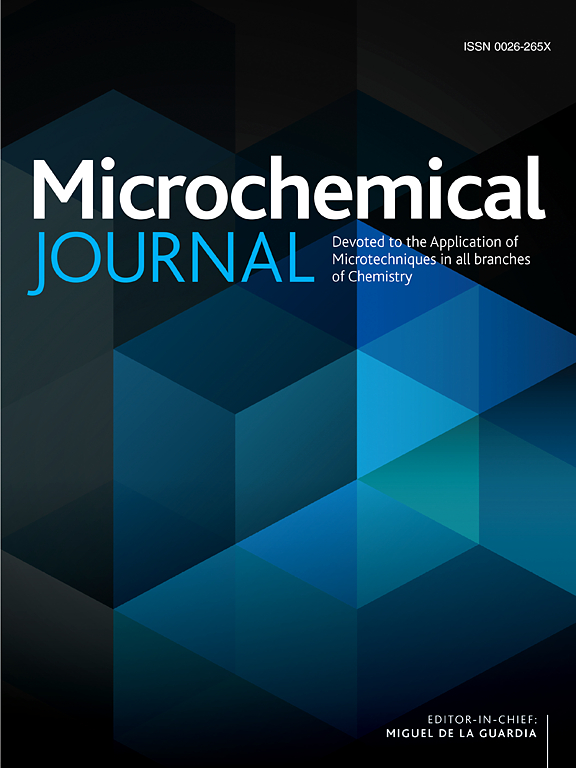Sample preparation for environmental monitoring under the perspective of white analytical chemistry: Green, sustainable and, effective
IF 4.9
2区 化学
Q1 CHEMISTRY, ANALYTICAL
引用次数: 0
Abstract
White analytical chemistry (WAC) emerges as an integrative concept that expands the traditional paradigm of green analytical chemistry by incorporating analytical performance (red), environmental sustainability (green), and practical/economic feasibility (blue). This review critically examines the main sample preparation techniques through the lens of WAC, highlighting their alignment with sustainability and analytical excellence in environmental applications. Conventional and emerging methodologies, including liquid-liquid extraction (LLE), solid-phase extraction (SPE), supercritical fluid extraction (SFE), and miniaturized techniques are discussed along with novel materials such as metal-organic frameworks (MOFs), carbon-based sorbents, and green solvents like ionic liquids and deep eutectics. Through this approach, the review highlights the potential of WAC to guide the development of sample preparation workflows that are not only efficient and reproducible, but also safer, cleaner, and more affordable for real-world environmental monitoring. Several application involving water, food and waste samples are reported, demonstrating how WAC-driven strategies achieve high “whiteness” scores, reinforcing their practical relevance and ecological value.

白色分析化学视角下的环境监测样品制备:绿色、可持续、有效
白色分析化学(WAC)作为一个综合概念出现,通过将分析性能(红色),环境可持续性(绿色)和实际/经济可行性(蓝色)结合起来,扩展了绿色分析化学的传统范式。这篇综述通过WAC的镜头批判性地检查了主要的样品制备技术,突出了它们与环境应用中的可持续性和分析卓越性的一致性。传统的和新兴的方法,包括液-液萃取(LLE)、固相萃取(SPE)、超临界流体萃取(SFE)和小型化技术,以及新型材料,如金属-有机框架(mof)、碳基吸附剂、绿色溶剂,如离子液体和深度共晶。通过这种方法,该综述强调了WAC在指导样品制备工作流程开发方面的潜力,这些工作流程不仅高效、可重复,而且更安全、更清洁、更经济地用于现实世界的环境监测。报告了几个涉及水、食物和废物样本的应用,展示了wac驱动的策略如何获得高“白度”分数,加强了它们的实际相关性和生态价值。
本文章由计算机程序翻译,如有差异,请以英文原文为准。
求助全文
约1分钟内获得全文
求助全文
来源期刊

Microchemical Journal
化学-分析化学
CiteScore
8.70
自引率
8.30%
发文量
1131
审稿时长
1.9 months
期刊介绍:
The Microchemical Journal is a peer reviewed journal devoted to all aspects and phases of analytical chemistry and chemical analysis. The Microchemical Journal publishes articles which are at the forefront of modern analytical chemistry and cover innovations in the techniques to the finest possible limits. This includes fundamental aspects, instrumentation, new developments, innovative and novel methods and applications including environmental and clinical field.
Traditional classical analytical methods such as spectrophotometry and titrimetry as well as established instrumentation methods such as flame and graphite furnace atomic absorption spectrometry, gas chromatography, and modified glassy or carbon electrode electrochemical methods will be considered, provided they show significant improvements and novelty compared to the established methods.
 求助内容:
求助内容: 应助结果提醒方式:
应助结果提醒方式:


